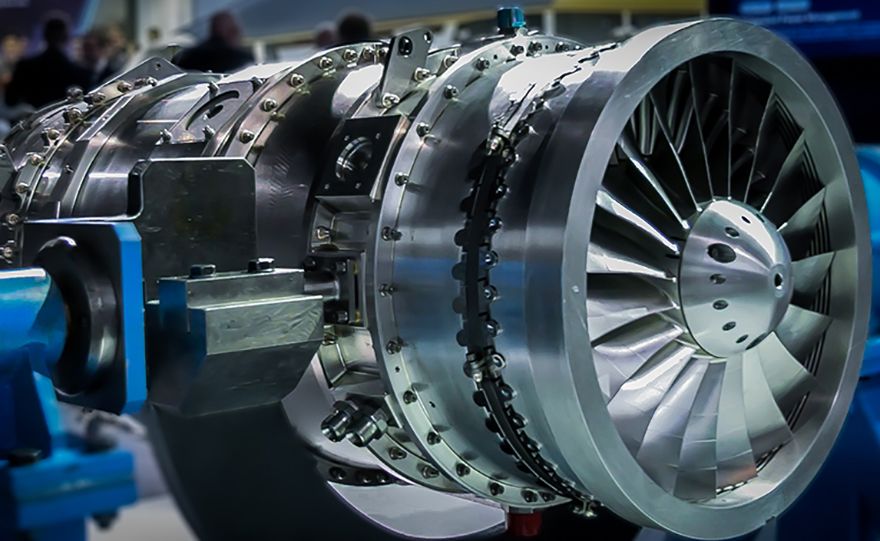 Rolls-Royce
Rolls-Royce has been involved in a first-of-its-kind recycling initiative — known as Tornado 2 Tempest - that has turned old
Royal Air Force (RAF) Tornado components into powdered metal, which has then been used to 3-D print new parts for the Orpheus small engine concept. With Orpheus being part of the Future Combat Air System (FCAS) programme, the project demonstrates that the technique has the potential to be used for the next-generation Tempest combat air platform — a cornerstone of Rolls-Royce’s Grow Combat strategic initiative.
Many of the Ministry of Defence’s (MoD) surplus assets, such as spare and broken components, contain strategic metals including high quality steel, aluminium and titanium. The Tornado 2 Tempest project team came together to identify whether some of these components, could be atomised into powders – known as “feedstock” – for additive manufacturing (AM) to make new parts. Tornado components containing high quantities of titanium, including jet engine compressor blades from a low-pressure air compressor, were cleaned and successfully atomised resulting in a 3-D printed nose cone and compressor blades being created from recycled parts.
Working as one team, Rolls-Royce installed the 3-D printed nose cone onto an Orpheus test engine and ran it at test conditions to demonstrate the part’s suitability and safety for future use, with positive results. The project was led by Defence Equipment and Support’s (DE&S) Defence Recycling & Disposals Team (DRDT) in partnership with the MoD FCAS team, Rolls-Royce and
Additive Manufacturing Solutions Ltd (AMS) based in Burscough, Lancashire.
Funded by UK Strategic Command’s Defence Support Organisation in relation to its ‘Circular Economics for Defence Concept Note’, the feat shows that turning old parts into new is viable and could bring huge benefits to the MoD and wider defence industry, especially through increasing the accessibility of strategic metals to the UK defence industry and suppliers.
Sustainability principlesAndrew Eady, Rolls-Royce VP FCAS Sustainability, said: “The Tornado 2 Tempest project exemplifies the forward-thinking sustainability principles embedded in the FCAS Sustainability Strategy and MoD Defence Support Strategy. At Rolls-Royce, we continue to be leaders in circular economy practices and innovative digital enablers to support our steps to be a lower carbon and digitally-enabled business. Tornado 2 Tempest is a bold, exciting and innovative project and a demonstration of how excellent collaboration between the MoD, industry and SME can deliver sustainable and technologically advanced solutions.”
The team also demonstrated a Digital Product Passport by capturing and recording material provenance and lifecycle data. This can potentially enable more informed decisions around material allocation and protect against the use of counterfeit materials.
Thomas Powell, DRDT’s Strategic & Submarine Recycling senior commercial manager, said: "Not only can this solution reduce the costs and burden of sourcing critical and high-value metals, but it can also produce components that are lighter, strong and longer lasting than those made through traditional forging techniques, thereby further enhancing the MoD’s overall sustainability and effectiveness.”
A team of more than 80 people participated in this project, including DRDT’s commercial graduates and Rolls-Royce graduate apprentices, combining current skills and innovative technologies to deliver and maintain future capabilities.
Reduced emissions and wasteSquadron Leader Rob, FCAS’ sustainability requirements manager, said: "Innovative technology initiatives such as Tornado 2 Tempest could reduce the RAF’s dependence on lengthy and costly supply chains, allowing us to sustain operations for longer, with the associated benefit of reduced emissions and waste. Through the expected lifecycle of the UK’s FCAS, we expect access to critical materials to be challenged, as global supply chains become increasingly disrupted and competitive. In parallel, there is a societal need to make the best use of the raw materials we already have.”
The MoD’s Chief of Defence Logistics and Support (CDLS) recently awarded the Tornado 2 Tempest Rolls-Royce a CDLS commendation in recognition of its commitment and dedication to the delivery and improvements of support to the front line.
AMS director Robert Higham concluded: “Our motto is ‘Innovative Solutions for a Sustainable Future’, and we were confident our innovations and ideas would have a great bearing on the future of a resilient supply. This project turned our proposed solutions into a reality, and we have been humbled and grateful to the MoD and Rolls-Royce for allowing us to showcase our capability to deliver game-changing circular economy processes and parts in the defence sector.”